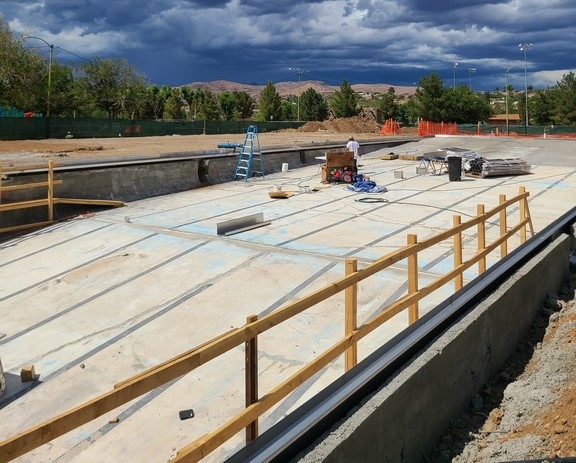Rebirthing a Community Asset
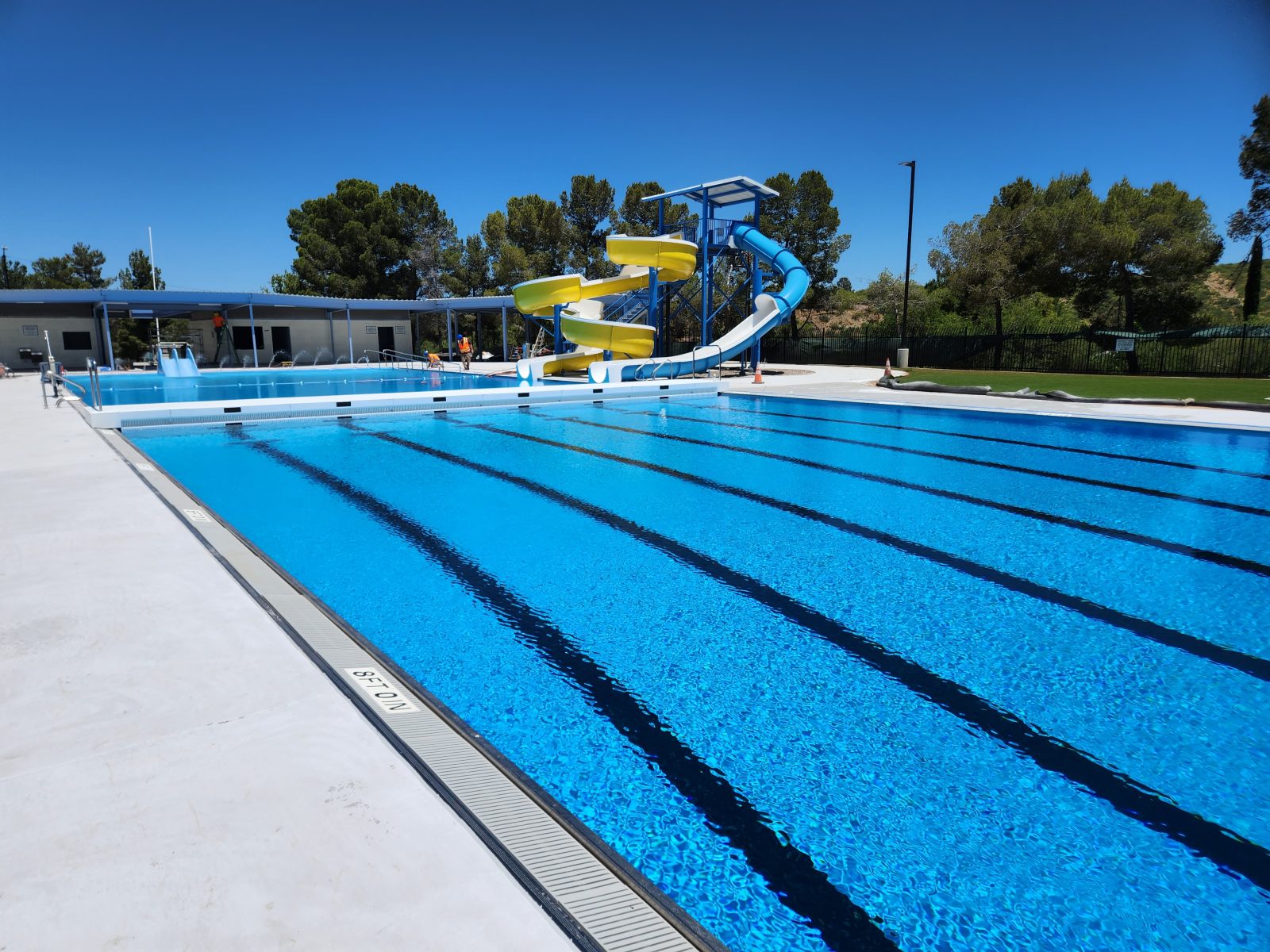
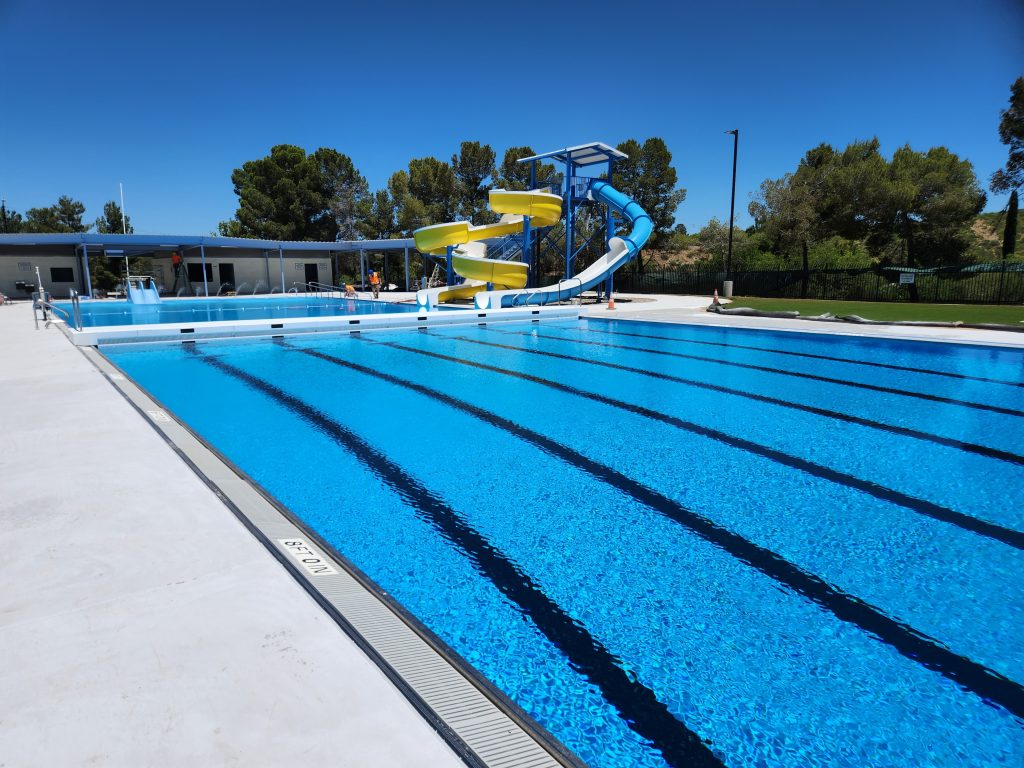
In an era when many public pools have fallen into decay and ceased to exist, the City of Globe, AZ, had a different fate in mind for its community pool. With assists from a top-flight project team, the community undertook an expansive pool renovation project featuring an updated design and functionality.
By Joshua Albertson
For nearly 10 years, the pool at the City of Globe, AZ, Community Center sat empty. In 2014, the once-vibrant pool was closed due to continuous water loss, a host of structural issues, and mechanical components that were past the end of their service life. Bringing the pool back was daunting due to both the cost of the renovation and the projected operating cost once it was reopened.
The old pool had existed for decades serving the community as a great place for the local kids and adults in the summertime. After closing, it was sorely missed especially when temperatures soared past triple digits. Unfortunately, the pool was a mess and seemed far from being able to ever reopen. The concealed concrete gutters had failed along with the perimeter plumbing system and it did not have a working filtration system.
And there was another problem. Originally, the pool was a 120-by-48-foot rectangle, which had always been an inconvenient dimension for the swim team. As discussions started with the city, it was clear the vessel needed to upsize to meet competition standards. It also needed to include a variety of design features to allow more of the city residents to enjoy the facility, thus justifying the renovation investment.
BACK TO LIFE
For years after its closure, discussions about making repairs moved forward, but were at first followed by little action due the high cost. Over time, however, as interest continued in how the swimming pool might be best used, and funding became available, residents identified several features they hoped to have included in the prospective project.
Based on their feedback, the city determined the pool needed a complete overhaul to accommodate the growing population and variety of user needs, including the Globe’s Piranha Swim Team. The renovation was funded by a mix of private and public resources and the pool finally reopened on June 2, 2023.
The pool’s square footage doubled in size, with many new amenities, including a splash pad, zero-entry area, new decking, a heater to lengthen the swim season, a moving bulkhead to allow competitive swimming, and a community center that would host additional programming.
The new aquatics components will not only extend the life of the pool by many years, but also save the city time and money in annual maintenance and allow for additional programming.
The major project elements include:
Stainless-steel perimeter pool gutter
The new gutter system was the most economical solution for this project because it provides consistent skimming action along the pool water surface, while the perimeter supply tube removes the need for traditional perimeter piping.
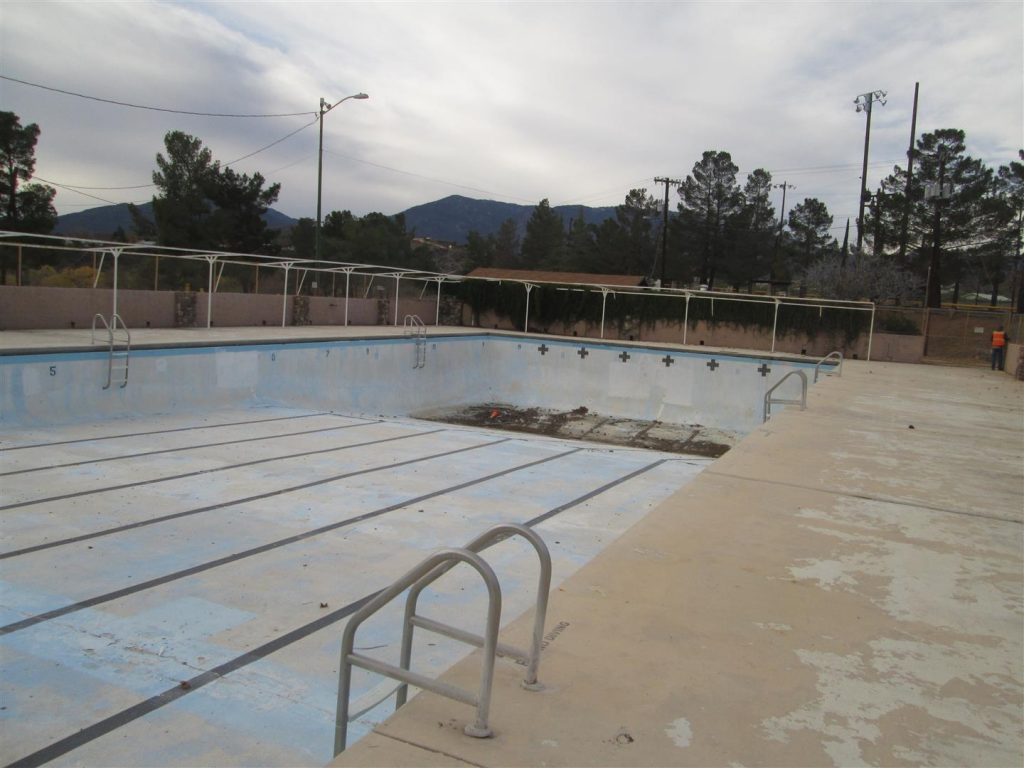
The city also included automatic surge control weirs within the gutter system, which keep the pool water circulating when not in use, thus eliminating the need for its existing surge tank.
Vacuum sand filtration system
Because the surge tank was eliminated, it created a perfect space for the vacuum sand filtration system in the equipment room, which was conveniently positioned along the pool’s deep end. With this setup, no additional excavation around the area was needed, a major cost savings.
The city opted for Natare’s vacuum sand filter, which is considered a highly efficient filter because it uses mostly gravity instead of suction, ultimately saving electricity. Because the system uses an air-scouring system for backwashing, the amount of water used is considerably less, which in turn also reduces chemical consumption.
Moveable Bulkhead
During the pool’s extended closure, the Globe Swim Team did not have a place to meet. With the addition of a moving pool bulkhead, the pool can now be adjusted for multiple course lengths and be used for multiple programs simultaneously. The solution was a Natare bulkhead for its ability to facilitate a variety of programming and coursing (25 meters or 25 yards).
The bulkhead is 50’3” long by 4’9” tall and 5’0”. It doesn’t have any exposed stainless steel above the waterline. It’s made using 316L SS and GPM grating with targets and rope hooks. The variable buoyancy chamber allows for the bulkhead to be easily moved to adjust for course length or programming needs.
PVC Membrane
Having been abandoned for nearly 10 years, the pool shell was in extremely poor condition, but was ultimately saved with a reinforced PVC membrane, in addition to several structural repairs. Because the project included the installation of new main drains, new plumbing and water slides, the pool shell needed to be completely reworked and eventually deemed structurally sound.
The PVC membrane functions as a pool interior that completely seals the pool structure, keeping it watertight. It’s a simple concept: the membrane is a flexible layer of PVC with a strong inner core of polyester mesh fabric, all of which is custom cut, fitted and bonded onsite to ensure a completely watertight pool surface.
Reinforced PVC is a practical solution for pool interiors because it can be applied over most existing pool shells to renovate deteriorated pools or to quickly provide an interior finish for new pools. In fact, the installation of reinforced PVC can even be done over cold joints in concrete and is not susceptible to freeze-thaw cycles.
Additionally, this pool interior finish works to stabilize the pool structure by preventing future water infiltrations. The reinforced PVC is also easily combined with gutter-system and PVC decking to create a seamless watertight solution for the entire pool area. Offered in both 60 and 80 mil thicknesses, reinforced PVC also provides a long-lasting waterproofing solution. It doesn’t hurt that the materials are readily available, knocking down delivery lead times.
While price is always a major consideration, many facility managers and operators find reinforced PVC to be affordable over the long term, especially when considering the costs of plaster refinishing or replacing their pools’ concrete structures.
In terms of service, the membrane is not as susceptible to deterioration from varying water conditions as are most cementitious surface options. Commercial-grade reinforced PVC is usually coated with a protective composite lacquer that resists chemical abuse, water absorption, and ultraviolet (UV) deterioration.
EFFICIENT INSTALLATION
The installation process is relatively straightforward. Before lining the pool with the reinforced PVC, crews must prepare the surface. Most pools require a day or less for preparation. However, if a pool is in a particularly bad shape, like the one in Globe City was, it might take three to four days to do all the patching, fixing returns, etc.
Once the pool surface is ready, a felt lining is installed along the floor and walls of the pool structure. This material, also referred to as geotextile, acts as an anti-bacterial agent to avoid microbial growth behind the membrane, extending its life.
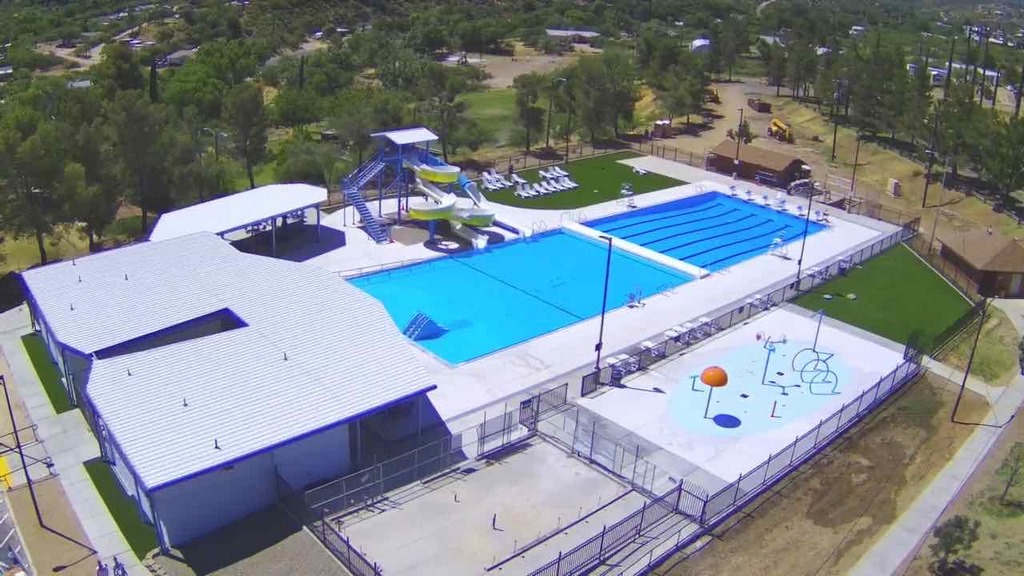
After the geotextile is installed, the reinforced PVC pool interior is rolled out in either 1.5 or 1.8 meters (5 or 6 feet) wide lengths, which are then heat-welded together on-site to ensure a smooth fit. Steps, beach entries, safety ledges, and other elements are cut, fitted, and welded as needed. Reinforced PVC is also available with slip-resistant, embossed surfaces, which are generally used on steps, in shallow areas, and beach entries. Black material is also available to create racing lanes, transitions, and depth markers.
The membrane also was installed on the new splash pad, which will give kids a much softer and slip-resistant surface to play on. The slip-resistant PVC ensures all safety requirements in all areas of the wet-zone are met.
Aquatic facilities also benefit from the shorter installation time required as reinforced PVC does not require waiting on ideal weather or the necessary time required for drying paint and concrete. The only downtime is if the surface requires levelling in which case a levelling material is poured prior to the installation of the reinforced PVC.
Not only does the Piranha Swim Team now have a place to practice and hold competitions, but also the city is now able to offer additional programming opportunities to its residents. The City of Globe Community Center Pool has been revitalized to its fullest potential and will welcome families and competitive swim teams for years to come.
Joshua Albertson is sales manager for Natare Pools. He can be reached at [email protected]
Project players
Architect – Balian Architects https://balianarchitects.com/project/globe-community-center/, Aquatics Designer – Aquatics H2O https://www.aquaticsh2o.com, Builder – Structural Preservation Systems https://www.structural.net/la











